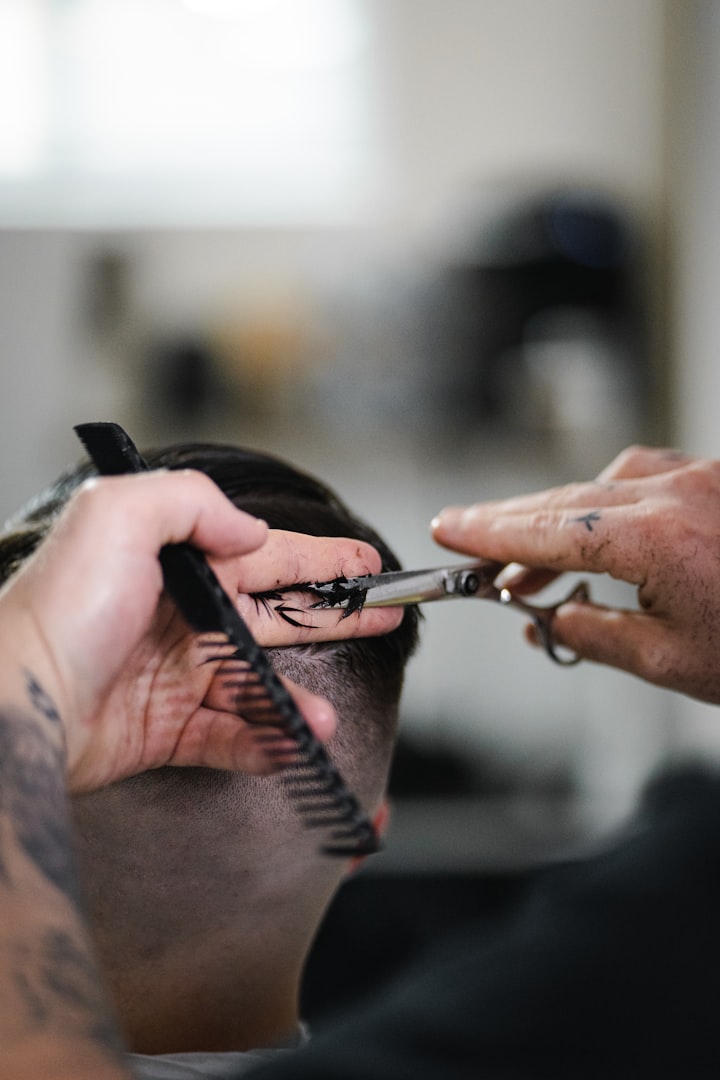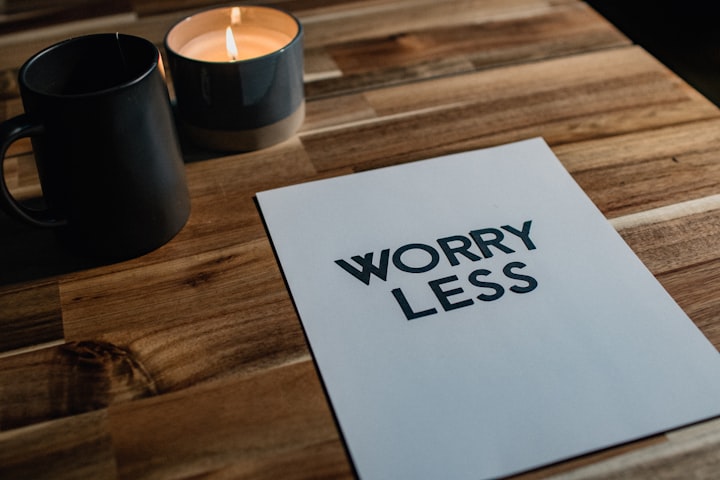5 Tips for Better Communication With Your Hairdresser
Good communication is the bridge between confusion and clarity. - Nat Turner

"Done! What do you think?! I think this style looks amazing on you! Don't you?"
You don't recognize the person in the mirror. Who is this horrific goblin staring back at you? You stare at the white wall reflected back to you, avoiding the hairdresser's gaze.
"Uh... Yeah, it's great. Thanks," you mumble under your breath.
The shape, the color, the style... It's all wrong. Walking to your car, you hunch over, aching for your long-hidden powers of invisibility to kick in and spare you this walk of shame. You grab the hat off your passenger seat, donning it in attempt to hide your questionable mane.
'How did this go so sideways? I told them exactly what I wanted' you wonder to yourself. It's going to take months to recover from this hack job. You groan, start your car, and accept your disastrous Lord Farquad fate.
Does this sound familiar? Nearly all of us have had an unsavory outcome after a trip to the hairdresser- whether it was a botched haircut, an unsightly color mishap, or a comedically failed style akin to a toddlers fumbled creation rather than Pinterest inspo glory.
Unfortunately, there is no sure fire way to escape a hair mishap other than avoiding the hairdresser completely. Hairdressers come in varying levels of knowledge, skills, and confidence- it can be challenging to find someone that you can trust wholeheartedly in the sea of salons and stylists. Although you may think you have clearly communicated what you expected out of your new cut or color, hairdressers and their clients often speak different languages and find different information relevant to be able to deliver results.
Fortunately, as a client there are several things you can do to clearly present what you want to your stylist and minimize poor outcomes.
Tip #1: Seek a specialist.
While finding a specialist is not directly related to communication, it can greatly reduce mishaps and create opportunity for your wants and needs to be heard and understood. The field of stylists who specialize in a niche continues to widen and with social media it's easier than ever before to search for a service provider that is a unique fit for you. It's increasingly common to find entire salons that veer toward a specialty- such as barber shops, blow-dry bars, and curly hair salons.
Searching for a stylist takes more work than popping into the salon down the street, but more oft than not it will result in a much more positive experience. A specialist has expertise which will lead them to ask deeper, pointed questions that help them get to the root of how they can best achieve your goals. A specialist likely has creative methods or techniques that a generalist hairstylist would lack. Plus, there's the added bonus that you can start off with a foundation of trust with your stylist knowing that they have a skillset catered toward your goals.
Take some time to explore hashtags on social media that pertain to your local area, for example: #saltlakecitybalayage #slcbarber #utahvividhair. Alternatively, you can do a quick Google search to find salons that might align with your goals. Be sure to include key words in your query such as: "curly salon Salt Lake City" or "Utah County hair extensions".
Tip #2: Pictures, pictures, pictures!
Great! So, you found a specialist. (Or maybe you didn't. It's just a suggestion!) Either way you have an appointment booked and the day is here!
Words are an amazing tool for communication. They will always be on our first line of communication as human beings. However, in our digital age, having the internet at our finger tips at all time provides us with a vast swath of inspiration and references. Long gone are the days of the coffee table style books full of style and color inspiration adorning every salon. Now, Pinterest, TikTok, and Instagram are where we find our inspiration for style. Save 2-3 photos of your ideal hairstyle and have them ready to show your stylist at your appointment. Multiple photos are always helpful- it gives your stylist an opportunity to identify similarities between photos and gather clues about what you gravitate toward.
Prior to your appointment, look over your photos and try to identify specific areas of interest to you. Often times, there are aspects about a photo that are more appealing than others. Identifying what's drawing your eye will help lead your stylist down a path of success. Do you like the texture? The length? The way the hair looks effortless? Are you admiring the color of the roots or the color of the ends? Do you like where the fade starts or are you looking at how it connects to the top? Are you narrowing in on the person in the photo or are you actually looking at their hair? (Bonus tip: Always place a finger over the face of the person in your inspiration photo. It helps us separate the desire to look like someone else vs actually liking the hair itself. It can be easy to get caught up in wanting to look like a beautiful woman and gloss over the fact that you don't actually like her hair that much.)
Being able to identify parts of what draws you to a color or style is going to be helpful information to make sure you and your stylist are on the same page.
Tip #3: Know your history.
If you follow any hairdresser on social media, you've likely been accosted by posts addressing the importance of knowing your hair history. It may seem like hairdressers are being dramatic, but your hair history- especially in terms of color or bleach processes- is truly very important to know. An accurate history makes a huge difference for your stylist. With an accurate hair history, they'll be able to set realistic expectations and avoid unsavory outcomes.
Hair color is a sneaky lil devil. Color that was done several years ago can still linger in the hair, even if it's no longer observable to the naked eye. Many hair colors and hair processes change the hair at a molecular level- they alter the protein strands that give your hair structure, break apart your natural melanin and deposit artificial ones, or break apart your natural pigments so thoroughly that it's no longer visible. (This is what creates the look of blonde hair). There are chemical processes that happen during every color or bleach application that will change or degrade your hair. Hairdressers ask for your honesty not to shame you but to assure that going forward your goals are achievable.
In addition to an accurate recollection of your hair history, it's often very helpful to know specifically what you don't like. Recalling what's gone poorly during past experiences, or what you absolutely loathe can be as helpful as knowing what you do want. Don't be afraid to bring these up with your stylist as well.
Tip #4: Keep an open mind.
You brought in a photo of the coolest hair you've ever seen. You've been dreaming for weeks about everyone's jaws dropping as you exit the salon. Running a hand through your hair, you make eye contact with a passerby. Everything is going in slow motion. You can't quite believe your audacity but you find yourself winking at them. This hair has changed everything.
A record screech. You snap back to the present moment. Your stylist is breaking you the news that hair you pined after is impossible. Your dreams of grandeur shatter before your eyes.
What gives? You found a specialist, you did your due diligence, you studied your inspiration photos, and delivered clear communication about what you do and don't like, yet here you are. Dreams. Crushed.
Step back and view it through this lens: your stylist is a craftsman, skilled in their trade, brimming with past experiences they can pull from. They're using this accumulation of knowledge to assess what's realistic for you and your hair. If your stylist is steering you away from your original idea, it's likely for very good reasons.
During color or bleaching services, your previous hair history could prevent your hair from being capable of handling intense chemical processes. Your stylist could be preventing you from the possibility of severe damage or dangerous chemical reactions. They might see that your inspiration color would wash you out or look unflattering. Maybe the style you want wouldn't work well with your hair type. Perhaps you want a chic bob because it's so cool and effortless, but you don't realize the level of maintenance the style actually requires.
There are endless reasons your stylist might tell you no. Trust their guidance and don't be afraid to ask questions to gain insight into their thought process. Keep an open mind. Collaborate together to find a style that you're happy with and your stylist feels they can confidently deliver. It never hurts to show up with a plan B already in your back pocket.
Tip #5: Remember that your stylist is a person too.
Our hair can be one of the most impactful ways that we choose to express ourselves. It's no wonder that we are protective of how we color, cut, or style it. We want our hair to look perfect. Out of a sense of protecting ourselves, it's easy to pile sky high expectations onto our stylists shoulders. At the end of the day though, hairstylists are people too. They have good days, bad days, inspired days, and tired days.
Hair cutting or color may appear simple from the outside looking in, but there is a swath of information your stylist has to consider every time they execute a cut or color. Geometry, chemistry, biology, artistry- there are aspects of all of these that have to be weighed, on top of providing their client a memorable experience. Despite having a breadth of knowledge on how to give you the hair of your dreams, stylists are still working within parameters of time, energy, resources, and biology.
Know that any good stylist will always want you to leave with their best possible work. Try as they might, there are always failures and unexpected challenges along the way. Giving your stylist benefit of the doubt is something they will always appreciate. Coming to your hair appointment with an attitude of collaboration will be fruitful for both parties and will help streamline communication as trust is established between you.
Wrap Up: Keep It Simple
These tips might seem surprisingly simple and straightforward. They are! Good communication usually is. Ultimately, improving your communication with your stylist can be as simple as doing your research, coming prepared, and keeping an open mind. As a hairstylist of 4 years, I write this article in hopes that it will give clients a new perspective and some tools to make your future hair appointments go smoothly. This information comes from noting my own successes with clients, as well as observing my coworkers over the years. Small changes can often produce big results and provide clarity- especially in this social media age where there are hundreds of different techniques, trends, and styles to choose from.
Give it a try and you might be surprised!
About the Creator
Steph Powell
Rediscovering my love for writing one day at a time. Lover of art, science, and learning.






Comments
There are no comments for this story
Be the first to respond and start the conversation.